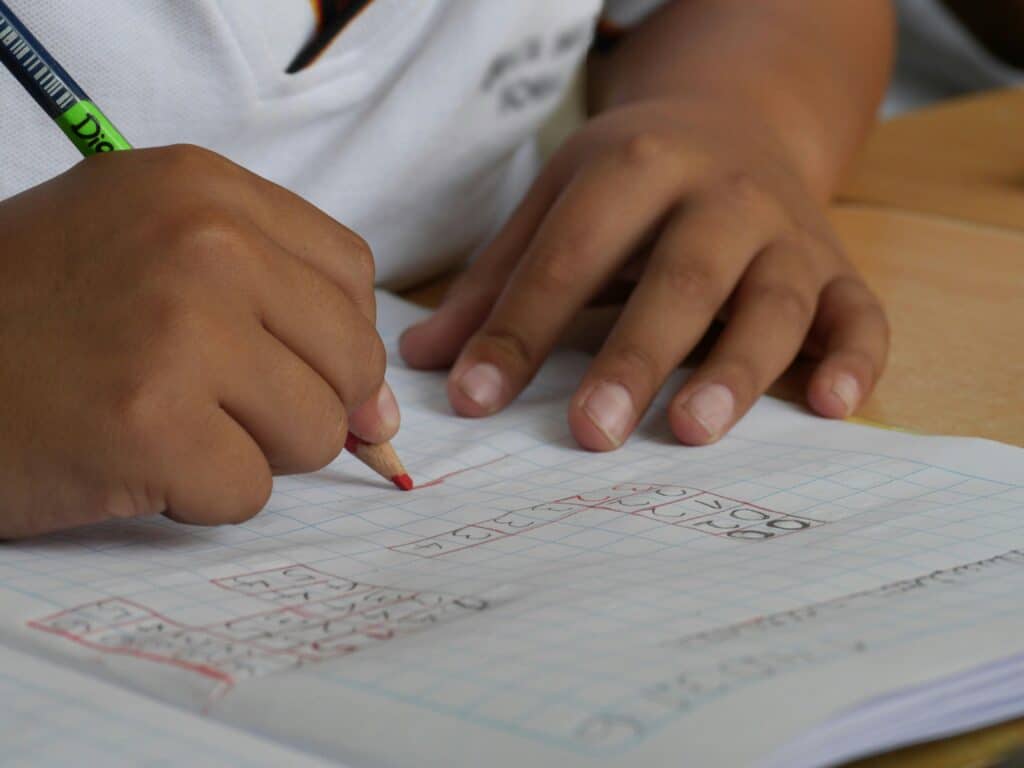
8 Tips for Differentiating Your Assessments
rebekah
April 07, 2025
Differentiated instruction can feel like balancing on an educational tightrope—meeting all of your students’ unique needs without toppling into chaos. If that wasn’t enough, there’s another curveball thrown your way—assessments.
But how exactly do you go about differentiating your assessments? How can you evaluate student progress when one-size-fits-all tests just don’t, well, fit?
Here’s the thing—differentiated assessments are not only totally doable but also immensely rewarding when you see your students thrive.
Whether you’re already differentiating your lessons or just stepping into this world, this guide will cover strategies to keep your assessments as varied as the learners in your classroom. But first, a little groundwork.
What Are the Four Elements of Differentiated Instruction?

Before we get into the nitty-gritty of differentiated assessments, it’s helpful to understand the four pillars of differentiated instruction as a whole:
Content
Content is the “what” of your teaching—facts, concepts, or skills you need to cover. Differentiation here means customizing that content to meet your students’ readiness levels, learning profiles, and interests.
For example, while Student A dives into a primary text, Student B might explore the same concept through multimedia sources like videos or podcasts. The goal? Deliver content in varied ways so everyone has an accessible, engaging entry point.
Process
If content is the “what,” process is the “how.” This focuses on how students make sense of and engage with the material. Activities, discussions, and problem-solving tasks can all vary based on students’ needs.
For instance, kinesthetic learners might experiment with a hands-on science activity, while their peers work on related puzzles. Differentiating the process ensures students actually absorb the content in a way that sticks.
Product
This refers to the end result or how students demonstrate their learning. Differentiated products acknowledge that not all students perform best through written tests.
One might build a model, another might present orally, and yet another could write a short paper. The aim? Expand how you measure learning while staying aligned with the objective.
Learning Environment
Finally, consider the room itself—both the physical setup and the mental atmosphere. Flexible seating, calming spaces, and open collaboration channels can enable each of your students to feel comfortable and ready to learn. Whether introverted or extroverted, independent or group-learning, the environment should empower every learner.
How Can You Differentiate Assessments?

Now that we’ve warmed up those instructional muscles, it’s time to look at assessment strategies that go beyond the standard test-and-grade model.
Differentiating assessments isn’t about adding complexity but instead, is about expanding possibilities. Here are a few simple ideas to help you start off your brainstorming process:
Bring It Outside
Enjoy the glorious power of sunshine (when the weather cooperates, of course). Evaluate students’ understanding through outdoor activities like measuring natural objects for a math class or sketching elements in the environment for an art assignment. Fresh air often sparks fresh ideas and lowers student stress levels, making it a win-win across the board.
Let Students Make a Cheat Sheet
Sound counterintuitive? Think again. Allowing students to prepare cheat sheets doesn’t just help them during the assessment but reinforces the learning process itself. They’ll need to identify key points, prioritize information, and organize it logically—all valuable skills to practice.
Have Informal Class Discussions
Set aside the formality of traditional exams and opt for a conversational assessment instead. Discuss the topic in small groups or one-on-one sessions. Students often articulate their understanding better when they feel open to dialogue, rather than under a test’s pressure.
Offer Choices
“Do you prefer writing an essay, creating a presentation, or filming a short video?” Giving students options allows them to play to their strengths while still meeting the objectives. This sense of autonomy leads to greater engagement and effort in their assessment.
Do Collaborative Tests
Team up! Pair or group students to tackle assessments together. Not only does this encourage peer learning and creative problem-solving, but it also mimics real-world collaboration—another win-win situation, but this time, for application and understanding.
Offer Language Support
For students who may struggle with language barriers, reading heavy texts may not do them justice. Include bilingual directions, offer audio assessments, or even allow verbal explanations to ensure their knowledge is fairly represented.
Let Students Choose Test Questions
Here’s a fresh take—allow students to select which questions they answer. Provide more questions than needed to complete the test, covering a variety of difficulty levels. This simple change can accommodate diverse learners without altering the material’s rigor.
Do a Take-Home Exam
Not every assessment needs to be limited by a ticking clock. Take-home exams allow students to better process and showcase their knowledge. Include open-ended or creative questions to make sure they’re engaging deeply with the content.
Tips for Differentiated Instruction and Assessment

Differentiating assessments isn’t just about handing out different tests—it’s about making sure every student has the opportunity to truly shine.
Here’s how you can create assessments that are as dynamic and unique as your classroom.
1. Make Sure Assessment is Ongoing
Assessment shouldn’t just be something you reserve for the end of a unit. By developing a system of ongoing assessments—before, during, and after a lesson—you’ll gain valuable insights into your students’ changing needs.
Pre-assessments help you understand their starting points, formative assessments keep the learning train on track, and summative assessments reflect their progress.
Tools like exit cards, quick quizzes, or even informal discussions can provide a snapshot of understanding without the added stress of a formal exam. It’s a simple way to make sure that you’re always aware of what’s working and what isn’t.
2. Practice Flexible Grouping
If you’re not switching up how your students are grouped, you’re missing an important opportunity to maximize learning. Flexible grouping allows you to adapt based on your students’ evolving needs. Maybe one day, you group them by skill level to target specific areas, and the next day you mi
x them up to encourage peer collaboration and idea-sharing. Students thrive when they get the chance to build on their strengths and tackle challenges. Plus, it keeps things interesting—they’ll never know what to expect from one lesson to the next.
3. Use a Mix of Formal and Informal Assessments
Formal assessments (like quizzes and tests) are great for measuring specific skills, but informal methods can tell you even more about your students. Think journal entries, concept maps, or simple “thumbs up/thumbs down” check-ins.
These tools reduce stress and allow students to share what they know in a more relaxed setting. And by blending both types, you’ll get a more comprehensive picture of their understanding—and they’ll appreciate having multiple ways to demonstrate their knowledge.
4. Keep Student Interests in Mind
A surefire way to engage your students? Incorporate their interests into your assessments. If your students are obsessed with a specific trend, show, or game, find a way to weave it into their tasks.
A math problem becomes instantly cooler when it involves their favorite sports team, and writing prompts tied to fun topics will spark their creativity. When they see themselves reflected in their assignments, they’re naturally more invested in the process.
5. Know How to Interpret the Data You Collect
Having data is one thing—knowing what to do with it is another. It’s important to take a step back and analyze the trends that assessments reveal. Is a particular concept constantly tripping students up? Are there certain skills that some groups excel in compared to others?
Use the data as a roadmap for your instruction. The beauty of differentiated assessment is that it allows you to pivot your approach based on what’s in front of you.
6. Set the Bar High
Your students will often rise to the level of expectations you set for them—so set that bar high.
Differentiating doesn’t mean lowering your standards but does require you to give each student the tools they need to reach those standards. Challenge them with rigorous tasks, provide guidance along the way, and celebrate their successes. When they hit those goals, it will reinforce that you believe in their ability to excel.
7. Create Individualized Goals
Help your students set realistic, personalized goals that take into account their strengths, areas of growth, and unique learning styles. These goals give every student something to strive for while allowing them to work at their own pace.
These aren’t set and forget checklist items, either. Revisit these targets regularly and adjust them as needed. It’s a collaborative process, and students feel empowered when they play a role in shaping their own learning journey.
8. Provide Written and Verbal Feedback
Feedback shouldn’t be reserved for pointing out errors, but instead, viewed as an opportunity for growth. Written feedback allows students to reference your insights as they refine their work, while verbal feedback creates a more personal connection.
When you can, give feedback that’s actionable and specific rather than vague (“Expand on this idea” is far more useful than “Needs improvement”). It’s not about perfecting one assignment; it’s about helping students continuously build their skills and confidence.
Final Thoughts

Differentiating your assessments is about meeting your students where they are while showing them where they can go. It’s about making the learning process adaptable, engaging, and tailored to reflect their individual needs and strengths.
Remember, teaching is not meant to be static. Just like every student is unique, every assessment should have the flexibility to adapt, evolve, and grow.
Try these tips, assess differently, and watch as your classroom dynamic transforms for the better.


